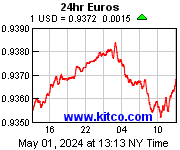COVID-IHU #37
Version 1 du 14 septembre 2020
Daytime variation in SARS-CoV-2 infection and cytokine production
Aissatou Bailo Diallo, Laetitia Gay, Benjamin Coiffard, Marc Leone, Soraya Mezouar, Jean-Louis Mège
Lien vers l’article : https://www.biorxiv.org/content/10.1101/2020.09.09.290718v1
Abstract
Ray and A. Reddy recently anticipated the implication of circadian rhythm in severe acute respiratory syndrome coronavirus 2 (SARS-CoV-2), which is the causative agent of the coronavirus disease (Covid-19). In addition to its key role in the regulation of biological functions, the circadian rhythm has been suggested as a regulator of viral infections. Specifically, the time of day of infection was found critical for illness progression, as has been reported for influenza, respiratory syncytial and parainfluenza type 3 viruses. We analyzed circadian rhythm implication in SARS-CoV-2 virus infection of isolated human monocytes, key actor cells in Covid-19 disease, from healthy subjects. The circadian gene expression of Bmal1 and Clock genes was investigated with q-RTPCR. Monocytes were infected with SARS-CoV-2 virus strain and viral infection was investigated by One-Step qRT-PCR and immunofluorescence. Interleukin (IL)-6, IL-1β and IL-10 levels were also measured in supernatants of infected monocytes. Using Cosinor analysis, we showed that Bmal1and Clock transcripts exhibited circadian rhythm in monocytes with an acrophase and a bathyphase at Zeitgeber Time (ZT)6 and ZT17. After forty-eight hours, the amount of SARS-CoV-2 virus increased in the monocyte infected at ZT6 compared to ZT17. The high virus amount at ZT6 was associated with significant increased release in IL-6, IL-1β and IL-10 compared to ZT17. Our results suggest that time day of SARS-CoV-2 infection affects viral infection and host immune response. They support consideration of circadian rhythm in SARS-CoV-2 disease progression and we propose circadian rhythm as a novel target for managing viral progression.


